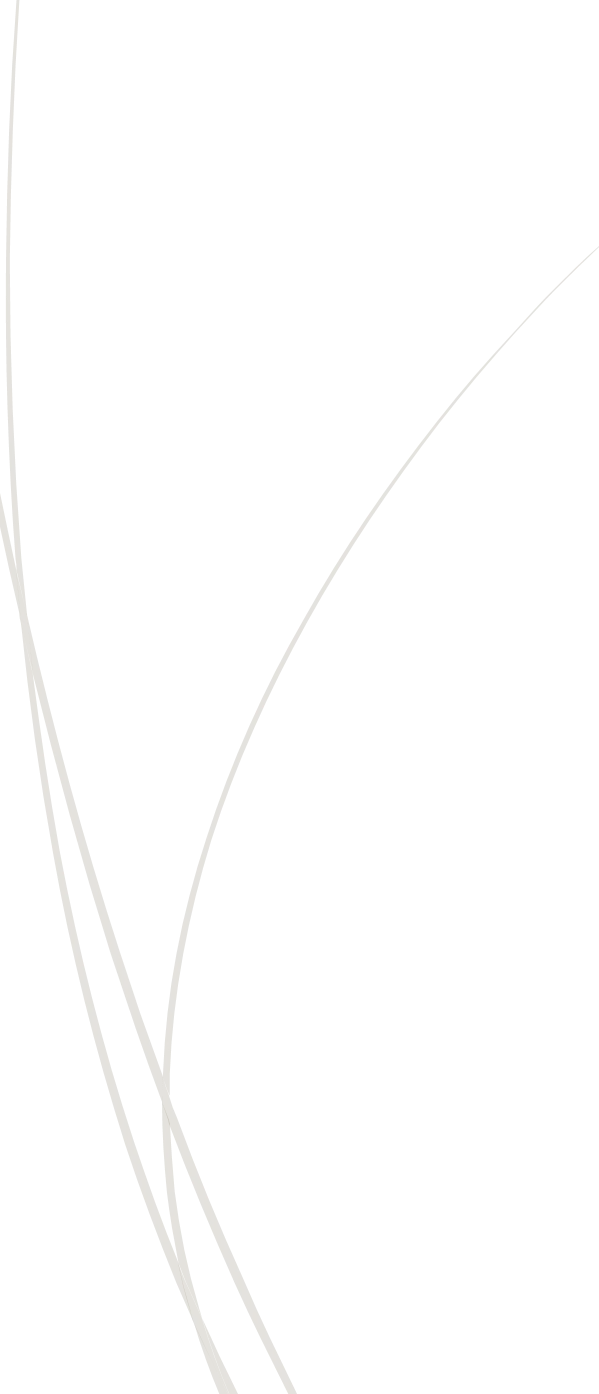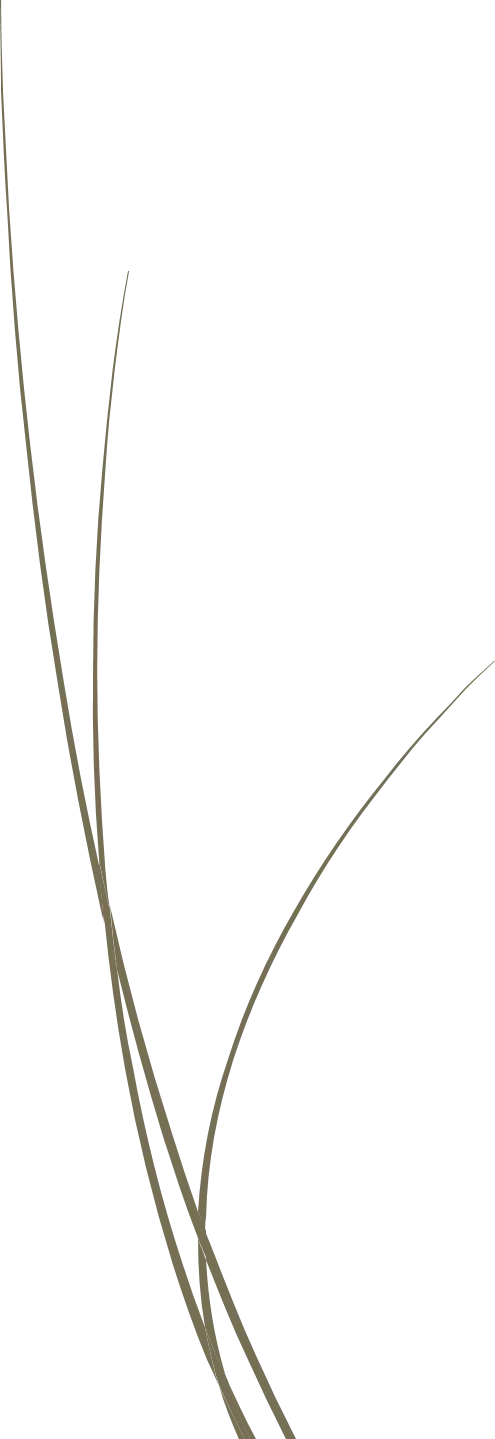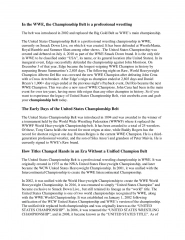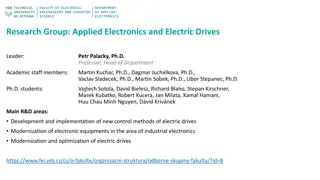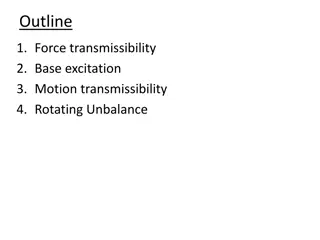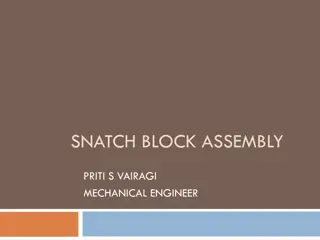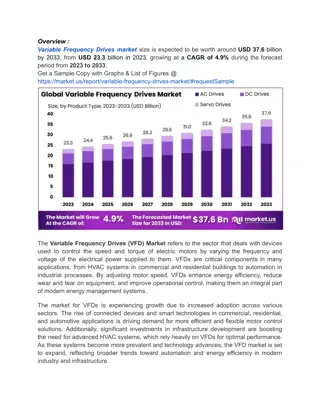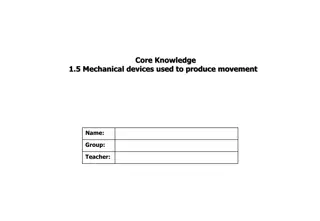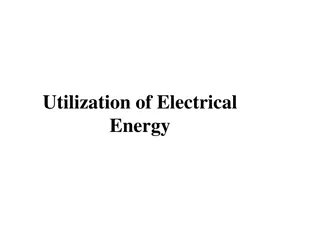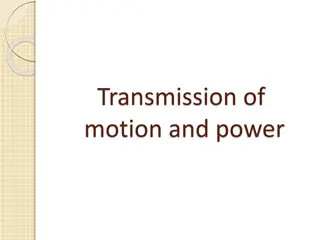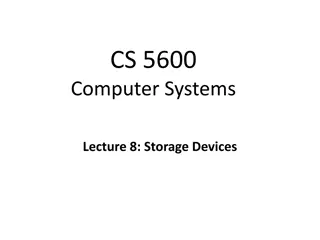Understanding Belt Drives in Mechanical Systems
Belt drives are essential components in mechanical systems for transmitting power between pulleys. They are classified based on power transmission capabilities and speed. Types of belts include flat belts, V-belts, and circular belts or ropes, each suitable for different applications. Belt drives can be open or crossed, impacting tension distribution. Velocity ratio in belt drives is crucial for determining the speed relationship between the driver and follower pulleys.
Download Presentation

Please find below an Image/Link to download the presentation.
The content on the website is provided AS IS for your information and personal use only. It may not be sold, licensed, or shared on other websites without obtaining consent from the author. Download presentation by click this link. If you encounter any issues during the download, it is possible that the publisher has removed the file from their server.
E N D
Presentation Transcript
First Semester chapter three Belt, Rope Dr. Adil ABed Nayeeif 2019-2020
Types of Belt Drives The belt drives are usually classified into the following three groups : 1. Light drives. These are used to transmit small powers at belt speeds up to about 10 m/s, as in agricultural machines and small machine tools . 2. Medium drives. These are used to transmit medium power at belt speeds over 10 m/s but up to 22 m/s, as in machine tools. 3. Heavy drives. These are used to transmit large powers at belt speeds above 22 m/s, as in compressors and generators. Types of Belts
Though there are many types of belts used these days, yet the following are important from the subject point of view: 1. Flat belt. The flat belt, as shown in Figure (a), is mostly used in the factories and workshops, where a moderate amount of power is to be transmitted, from one pulley to another when the two pulleys are not more than 8 meters apart. 2. V-belt. The V-belt, as shown in Figure (b), is mostly used in the factories and workshops where a moderate amount of power is to be transmitted, from one pulley to another, when the two pulleys are very near to each other. 3. Circular belt or rope. The circular belt or rope, as shown in Figure (c), is mostly used in the factories and workshops, where a great amount of power is to be transmitted, from one pulley to another, when the two pulleys are more than 8 meters apart Types of Flat Belt Drives Open belt drive Crossed or twist belt drive
Open belt drive The open belt drive, as shown in Figure(1), is used with shafts arranged parallel and rotating in the same direction. In this case, the driver A pulls the belt from one side (i.e. lower side RQ) and delivers it to the other side (i.e. upper side LM). Thus the tension in the lower side belt will be more than that in the upper side belt. The lower side belt (because of more tension) is known as tight side whereas the upper side belt (because of less tension) is known as slack side, as shown in figure. Figure(1)
Crossed or twist belt drive The crossed or twist belt drive, as shown in Figure(2) , is used with shafts arranged parallel and rotating in the opposite directions In this case, the driver pulls the belt from one side (i.e. RQ) and delivers it to the other side (i.e. LM). Thus the tension in the belt RQ will be more than that in the belt LM. The belt RQ (because of more tension) is known as tight side, whereas the belt LM (because of less tension) is known as slack side, as shown in Figure (2). Figure(2)
Velocity Ratio of Belt Drive It is the ratio between the velocities of the driver and the follower or driven. It may be expressed, mathematically, as discussed below : Let d1 = Diameter of the driver, d2 = Diameter of the follower N1 = Speed of the driver in r.p.m., and N2= Speed of the follower in r.p.m. Length of the belt that passes over the driver, in one minute = d1.N1 Similarly, length of the belt that passes over the follower, in one minute = d2 . N2 Since the length of belt that passes over the driver in one minute is equal to the length of belt that passes over the follower in one minute, therefore, d1. N1= d2. N2 d N N= Velocity ratio, 2 1 d + N d t 1 2 When the thickness of the belt (t) is considered, then velocity ratio, = 2 1 + N d t 1 2 When there is no slip, then v1 = v2.
Velocity Ratio of a Compound Belt Drive Sometimes the power is transmitted from one shaft to another, through a number of pulleys as shown in Figure (3). Consider a pulley 1 driving the pulley 2. Since the pulleys 2 and 3 are keyed to the same shaft, therefore the pulley 1 also drives the pulley 3 which, in turn, drives the pulley 4. Let d1 = Diameter of the pulley 1, N1 = Speed of the pulley 1 in r.p.m., d2, d3, d4, N2 , N3 , N4= Corresponding values for pulleys 2,3 and 4. N= d We know that velocity ratio of pulleys 1 and 2, (1) 2 1 N d N= d 1 2 Similarly, velocity ratio of pulleys 3 and 4, (2) 4 3 N d 3 4 Multiplying equations (1) and (2), N N d d = 2 4 1 3 N N d d 1 3 2 4 d N d ...( N2 = N3, being keyed to the same shaft) d d N = 3 4 1 1 2 4 Figure (3)
Slip of Belt In the previous articles, we have discussed the motion of belts and shafts assuming a firm frictional grip between the belts and the shafts. But sometimes, the frictional grip becomes insufficient. This may cause some forward motion of the driver without carrying the belt with it. This may also cause some forward motion of the belt without carrying the driven pulley with it. This is called slip of the belt and is generally expressed as a percentage. The result of the belt slipping is to reduce the velocity ratio of the system. As the slipping of the belt is a common phenomenon, thus the belt should never be used where a definite velocity ratio is of importance (as in the case of hour minute and second arms in a watch). Let s1 % = Slip between the driver and the belt, and s2 % = Slip between the belt and the follower. . . . 1 d N d N s d N s = = Velocity of the belt passing over the driver per second, ..(i) v 1 1 1 1 1 1 1 1 60 60 100 60 100 and velocity of the belt passing over the follower per second . . 1 v d N s s = = v v 2 2 2 2 60 100 100 Substituting the value of v from equation (i),
. . 1 d N d N s s = 1 2 2 1 1 1 2 60 60 100 100 N d s s 1s s = 1 Neglecting 2 1 1 2 2 100 100 N d 100 1 2 + 1 N d s s d s = = 1 2 1 1 2 1 100 100 N d d 1 2 2 ... (where s = s1 + s2, i.e. total percentage of slip) If thickness of the belt (t) is considered, then + 100 2 1 t d N + 1 N d t s = 2 1
Length of an Open Belt Drive An open belt drive, both the pulleys rotate in the same direction as shown in Figure (4). r1 and r2 = Radii of the larger and smaller pulleys x = Distance between the centres of two pulleys (i.e. O1 O2), and L = Total length of the belt. Let the belt leaves the larger pulley at E and G and the smaller pulley at F and H as shown in Figure (4).Through O2, draw O2 M parallel to FE. From the geometry of the figure, we find that O2 M will be perpendicular to O1 E. Let the angle MO2 O1= radians Figure (4) We know that the length of the belt, L = Arc GJE + EF + Arc FKH + HG = 2 (Arc JE + EF + Arc FK) ......(1) O M O E EM r r = = = sin 1 1 1 2 O O 1 O O 1 x 2 2
1 r r = 2 Since is very s mall, therefore putting, sin = (in radians) .... (2) 2 x .. (3) + = JE Arc 1r Similarly (4) 2 = Arc FK 2r 2 x r r ( ) ( ) ( ) = = = = x 2 2 2 EF MO O O O M x r r 1 2 1 2 2 1 2 1 1 2 Expanding this equation by binomial theorem, ( ) 2 2 r r r r 1 = + = EF x x .......... .. 1 1 2 1 2 (5) x 2 x 2 Substituting the values of arc JE from equation (3), arc FK from equation (4) and EF from equation (5) in equation (1), we get ( ) 2 2 2 ( r 2 r r = + + + L r x r 2 ) 1 2 x 1 2 2 r ( ) ( ) = + + 2 + + L r r r r x 2 1 2 x 1 2 1 2
Length of a Cross Belt Drive In a cross belt drive, both the pulleys rotate in opposite directions as shown in Figure (5). L = Arc GJE + EF + Arc FKH + HG = 2 (Arc JE + EF + Arc FK) ......(1) 2 2 ( ) 2 1 2 O O MO EF = = Figure (5) = + Arc JE 1r = + Arc FK 2r 2 + x r r ( ) ( ) = x 1 = + 2 2 2 O M x r r 1 2 2 1 1 2 ( ) 2 + + 2 r r r r 1 = + = EF x x .......... .. 1 1 2 1 2 x x 2 2 ( ) 2 + 2 2 2 r r = + + + + L r x r 2 1 2 x 1 2 ( ) + 2 r r ( ) ( ) = + + 2 + + L r r r r x 2 1 2 x 1 2 1 2
Power Transmitted by a Belt Figure (6) shows the driving pulley (or driver) A and the driven pulley (or follower) B. We have already discussed that the driving pulley pulls the belt from one side and delivers the same to the other side. It is thus obvious that the tension on the former side (i.e. tight side) will be greater than the latter side (i.e. slack side) as shown in Figure (6). T1and T2 = Tensions in the tight and slack side of the belt respectively in newton's, r1 and r2 = Radii of the driver and follower respectively, and v = Velocity of the belt in m/s. The effective turning (driving) force at the circumference of the follower is the difference between the two tensions (i.e. T1 T2). Figure (6) Work done per second = (T1 T2) v N-m/s and power transmitted, P = (T1 T2) v W
Ratio of Driving Tensions For Flat Belt Drive T1= Tension in the belt on the tight side, T2 = Tension in the belt on the slack side, and = Angle of contact in radians (i.e. angle subtended by the arc AB, along which the belt touches the pulley at the centre). e T 2 T= 1 The above expression gives the relation between the tight side and slack side tensions, in terms of coefficient of friction and the angle of contact.
Angle of Contact When the two pulleys of different diameters are connected by means of an open belt as shown in Figure(7), then the angle of contact or lap ( ) at the smaller pulley must be taken into consideration.. r1 = Radius of larger pulley, r2 = Radius of smaller pulley, and Figure(7) x = Distance between centres of two pulleys (i.e. O1 O2). Angle of contact or lap, ( ) = 2 rad 180 o 180 A little consideration will show that when the two pulleys are connected by means of a crossed belt as shown in Figure (8),then the angle of contact or lap ( ) on both the pulleys is same. Figure (8) ( ) Angle of contact or lap, = + 2 rad 180 o 180
Centrifugal Tension Since the belt continuously runs over the pulleys, therefore some centrifugal force is caused, whose effect is to increase the tension on both, tight as well as the slack sides. The tension caused by centrifugal force is called centrifugal tension.At lower belt speeds (less than 10 m/s), the centrifugal tension is very small, but at higher belt speeds (more than 10 m/s), its effect is considerable and thus should be taken into account. m = Mass of the belt per unit length in kg, v = Linear velocity of the belt in m/s, r = Radius of the pulley over which the belt runs in metres, and TC = Centrifugal tension acting tangentially at P and Q in newtons. TC = m . V2 When the centrifugal tension is taken into account, then total tension in the tight side, Tt1 = T1+TC Power transmitted, P=(Tt1 Tt2 ) v =[ (T1+TC) (T2+TC)]v. 1. 2. T T 3. The ratio of driving tensions may also be written as C= e 1 T T C 2
Maximum Tension in the Belt A little consideration will show that the maximum tension in the belt (T) is equal to the total tension in the tight side of the belt (Tt1). = Maximum safe stress in N/mm2, b = Width of the belt in mm, and t = Thickness of the belt in mm. We know that maximum tension in the belt, T = Maximum stress cross-sectional area of belt = . b. t When centrifugal tension is neglected, then T (or Tt1) = T1 and when centrifugal tension is considered, then T (or Tt1) = T1+ TC
Condition For the Transmission of Maximum Power We know that power transmitted by a belt, P = (T1 T2) v .. (1) T T= 2= T 1 we have also seen that the ratio of driving tensions is or e 1 e T 2 Substituting the value of T2 in equation (1) T T P 1 = 1 1 1 (2) Where v e e = C = = v T T C . v . 1 1 e 1 1 We know that T1= T - TCwhere T = Maximum tension to which the belt can be subjected in newton's, Substituting the value of T1 in equation (2), For maximum power, differentiate the above expression with respect to v and equate to zero, ( ) ( )C . ( ) = = = P T T C . v . P T m v C . v T v m dp v . . . . 2 3 C = 0 dv d ( ) 3= T v m v . . 0 dv T 3 m . v2 = 0 T 3 TC = 0 or T = 3 TC .(3) T TC= We know that T1 = T TC and for maximum power, 1. 3 T 3 = v 2. From equation (3), the velocity of the belt for the maximum power, m
Initial Tension in the Belt When a belt is wound round the two pulleys (i.e. driver and follower), its two ends are joined together ; so that the belt may continuously move over the pulleys, since the motion of the belt from the driver and the follower is governed by a firm grip, due to friction between the belt and the pulleys. In order to increase this grip, the belt is tightened up. At this stage, even when the pulleys are stationary, the belt is subjected to some tension, called initial tension. T0= Initial tension in the belt, = Coefficient of increase of the belt length per unit force. A little consideration will show that the increase of tension in the tight side, = T1 T0 and increase in the length of the belt on the tight side , = (T1 T0) Similarly, decrease in tension in the slack side, = T0 T2 and decrease in the length of the belt on the slack side, = (T0 T2) Assuming that the belt material is perfectly elastic such that the length of the belt remains constant, when it is at rest or in motion, therefore increase in length on the tight side is equal to decrease in the length on the slack side. (T1 T0) = (T0 T2) or T1 T0 = T0 T2 2 + T T ...(Neglecting centrifugal tension) = T 1 2 0 ...(Considering centrifugal tension) 2 + + T T C T 2 = T 1 2 0
V-belt drive We have already discussed that a V-belt is mostly used in factories and workshops where a great amount of power is to be transmitted from one pulley to another when the two pulleys are very near to each other. Ratio of Driving Tensions for V-belt 2 = Angle of the groove. = Coefficient of friction between the belt and sides of the groove. Thus the relation between T1 and T2 for the V-belt drive will be T= e sec( Co ) 1 T 2 Rope Drive The rope drives are widely used where a large amount of power is to be transmitted, from one pulley to another, over a considerable distance. Ratio of Driving Tensions for Rope Drive The ratio of driving tensions for the rope drive may be obtained in the similar way as V-belts. T= e sec( Co ) 1 T 2
Examples EX(1):An open belt running over two pulleys 240 mm and 600 mm diameter connects two parallel shafts 3 meters apart and transmits 4 kW from the smaller pulley that rotates at 300 r.p.m. Coefficient of friction between the belt and the pulley is 0.3 and the safe working tension is 10N per mm width. Determine : 1. minimum width of the belt, 2. initial belt tension, and 3. length of the belt required. Solution. Given :d2= 240 mm = 0.24 m ; d1= 600 mm = 0.6 m ; x = 3 m ; P = 4 kW = 4000 W; N2= 300 r.p.m. ; = 0.3 ; T1= 10 N/mm width. 1. Minimum width of belt N d v 60 60 . 0 24 300 = = = m s . / 3 77 2 2 We know that velocity of the belt, Power transmitted (P), 4000 = (T1 T2) v = (T1 T2) 3.77 T1 T2 = 4000 / 3.77 = 1061 N .. (1) d d x 2 2 r r . . 0 6 0 24 = = = = = rad or sin . . 0 06 3 44 o 1 2 1 2 x 3 and angle of lap on the smaller pulley, = 180 2 = 180 2 3.44 = 173.12 478 2 . = = e T 173.12 / 180 = 3.022 rad T 3 . 022 . 0 3 1 We know that .(2) 2 From equations (1) and (2), T1 = 1779 N, and T2 = 718 N Since the safe working tension is 10 N per mm width, therefore minimum width of the belt, T 10 1779 = = = b mm . 177 9 1 10
2. Initial belt tension + + T T 1779 718 We know that initial belt tension, Ans T 0 = = = N 8 . 124 1 2 2 2 3. Length of the belt required We know that length of the belt required, ( ) = 2 d d ( ) + + + L d d x 2 1 2 x 1 2 2 4 ( ) 2 6 . 24 . 0 0 ( ) = + + + L 6 . 24 . 0 0 2 3 2 4 3 = 1.32 + 6 + 0.01 = 7.33 mAns.
EX(2): A pulley is driven by a flat belt, the angle of lap being 120. The belt is 100 mm wide by 6 mm thick and density1000 kg/m3. If the coefficient of friction is 0.3 and the maximum stress in the belt is not to exceed 2 MPa, find the greatest power which the belt can transmit and the corresponding speed of the belt. Solution. Given : = 120 = 120 / 180 = 2.1 rad ; b = 100 mm = 0.1 m ; t = 6 mm = 0.006 m ; = 1000 kg / m3; = 0.3 ; = 2 MPa = 2 106 N/m2 . Speed of the belt for greatest power We know that maximum tension in the belt, T = . b. t = 2 106 0.1 0.006 = 1200 N and mass of the belt per metre length, m = Area length density = b. t. l. m = 0.1 0.006 1 1000 = 0.6 kg/m T 3 1200 = = = v m s . / 25 82 Speed of the belt for greatest power , m . 3 0 6 Greatest power which the belt can transmit We know that for maximum power to be transmitted, centrifugal tension, TC = T/3 = 1200/3 = 400 N and tension in the tight side of the belt, T1= T TC= 1200 400 = 800 N T T 88 1 . = = e 88 . 1 = = 3 . 1 . 0 2 T N . 425 5 1 1 T 2 2 ( )v . = 1 Greatest power which the belt can transmit, P T T 2 ( ) = = P W 5 . 82 . 800 425 25 9670
EX(2)A compressor, requiring 90 kW is to run at about 250 r.p.m. The drive is by V-belts from an electric motor running at 750 r.p.m. The diameter of the pulley on the compressor shaft must not be greater than 1 meter while the center distance between the pulleys is limited to 1.75 meter. The belt speed should not exceed 1600 m/min. Determine the number of V-belts required to transmit the power if each belt has a cross-sectional area of 375 mm2, density 1000 kg/m3and an allowable tensile stress of 2.5 MPa. The groove angle of the pulley is 35 . The coefficient of friction between the belt and the pulley is 0.25. Calculate also the length required of each belt Solution. Given :P = 90 kW ; N2= 250 r.p.m. ; N1= 750 r.p.m. ; d2= 1 m ; x = 1.75 m ; v = 1600 m/min = 26.67 m/s ; a = 375 mm2= 375 10-6m2; = 1000 kg/m3; = 2.5 Mpa = 2.5 106 N/m2 ; 2 = 35 or = 17.5 ; = 0.25 First of all, let us find the diameter of pulley on the motor shaft (d1). We know that. d N d or d N 750 1 2 1 N d 250 1 = = = = m 33 . 0 2 1 2 21 N 1 We know that the mass of the belt per meter length, m = Area length density = 375 10 6 1 1000 = 0.375 kg Centrifugal tension, TC = m.v2= 0.375 (26.67)2 = 267 N and maximum tension in the belt, T = . a = 2.5 106 375 10-06= 937.5 N Tension in the tight side of the belt, T1 = T TC = 937.5 267 = 670.5 N Let T2 = Tension in the slack side of the belt. For an open belt drive, as shown in Figure (9),
r r d d 33 . 1 0 = = = = = rad or sin . 0 1914 11 o 1 2 2 1 x x 75 . 2 2 1 and angle of lap on smaller pulley (i.e. pulley on motor shaft), = 180 2 = 180 2 11 = 158 = 158 / 180 = 2.76 rad T T 954 . Figure (9), = = = = = T N . e e 954 . 67 36 9 ec ec cos 25 . 75 . cos 5 . 0 2 17 1 1 T 2 9 2 Number of V-belts We know that power transmitted per belt, = (T1 T2) v = (670.5 67.36) 26.67 = 16 086 W = 16.086 kW Total power transmitte d 90 = = = Number of V - belts 6 . 5 6 Power transmitte per d belt 086 . 16 Length of each belt ( ) = 2 d d ( ) + + + L d d x 2 1 2 We know that length of belt for an open belt drive, x 1 2 2 4 ( ) = 2 33 . 1 0 ( ) + + + L 33 . 75 . 1 0 2 1 75 . 2 4 1 = 2.1 + 3.5 + 0.064 = 5.664 m Ans.
Exercises Q1/ A rope drive transmits 600 kW from a pulley of effective diameter 4 m, which runs at a speed of 90 r.p.m. The angle of lap is 160 ; the angle of groove 45 ; the coefficient of friction 0.28 ; the mass of rope 1.5 kg / m and the allowable tension in each rope 2400 N. Find the number of ropes required. Q2/ A pulley used to transmit power by means of ropes has a diameter of 3.6 metres and has 15 grooves of 45 angle. The angle of contact is 170 and the coefficient of friction between the ropes and the groove sides is 0.28. The maximum possible tension in the ropes is 960 N and the mass of the rope is 1.5 kg per metre length. What is the speed of pulley in r.p.m. and the power transmitted if the condition of maximum power prevail ? Q3/ A flat belt is required to transmit 30 kW from a pulley of 1.5 m effective diameter running at 300 r.p.m. The angle of contact is spread over (11/24) of the circumference. The coefficient of friction between the belt and pulley surface is 0.3. Determine, taking centrifugal tension into account, width of the belt required. It is given that the belt thickness is 9.5 mm, density of its material is 1100 kg / m3and the related permissible working stress is 2.5 MPa
Q4/ In a horizontal belt drive for a centrifugal blower, the blower is belt driven at 600 r.p.m. by a 15 kW, 1750 r.p.m. electric motor. The centre distance is twice the diameter of the larger pulley. The density of the belt material = 1500 kg/m3; maximum allowable stress = 4 MPa; 1 = 0.5 (motor pulley); 2 = 0.4 (blower pulley); peripheral velocity of the belt = 20 m/s. Determine the following: 1. Pulley diameters diameters ; 2. belt length; 3. cross-sectional area of the belt; 4. minimum initial tension for operation without slip; and 5. resultant force in the plane of the blower when operating with an initial tension 50 per cent greater than the minimum value. Q5/An open belt connects two flat pulleys. The pulley diameters are 300 mm and 450 mm and the corresponding angles of lap are 160 and 210 . The smaller pulley runs at 200 r.p.m. The coefficient of friction between the belt and pulley is 0.25. It is found that the belt is on the point of slipping when 3 kW is transmitted. To increase the power transmitted two alternatives are suggested, namely (i) increasing the initial tension by 10%, and (ii) increasing the coefficient of friction by 10% by the application of a suitable dressing to the belt. Which of these two methods would be more effective? Find the percentage increase in power possible in each case.


